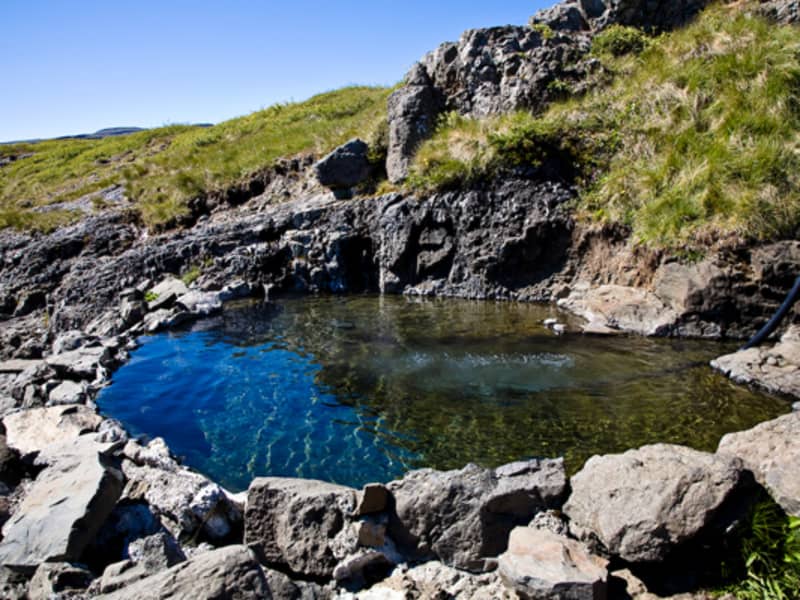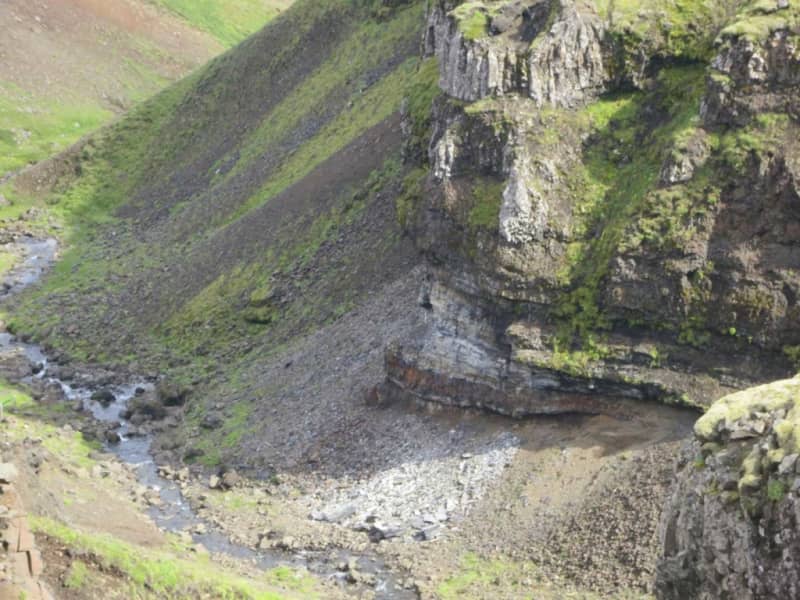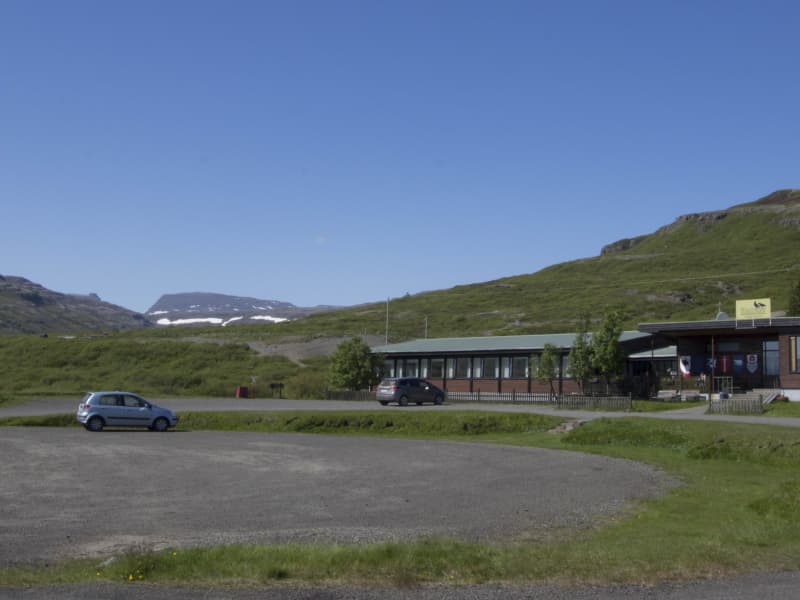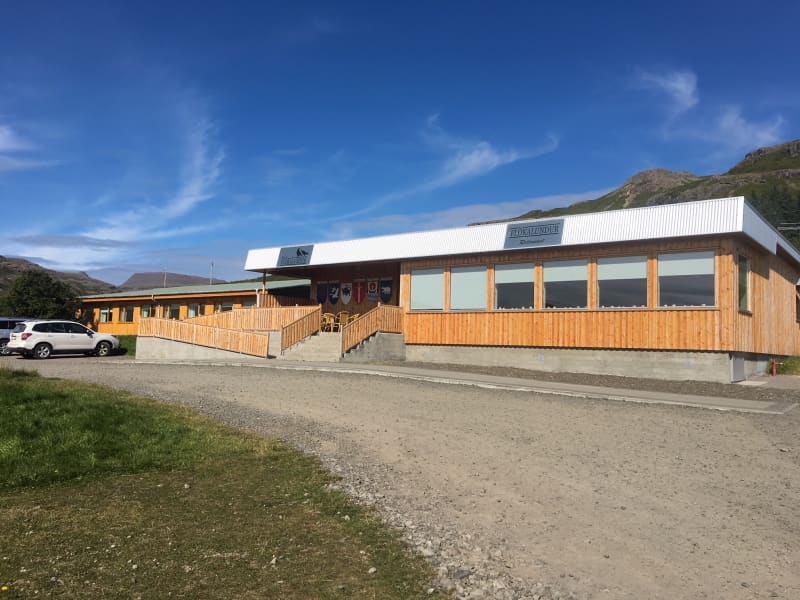Fauna in Vatnsfjörður is pretty diverse compared to Iceland, even though the number of animals is not so high. Around twenty types of birds live in the nature reserve area all year round. Mice, foxes, minks can be found in the area. You could see seals in the ocean and both salmon and trout can be found in the rivers.
The flora is based on low rise rowan and birch wood which stretches from the coastline up to the mountains. The wood and the mudflats are the base for the diverse flora. You can also find a lot of Arctic blueberries in the area if you are travelling during August/September.
The geology of the area is similar to the Westfjords in general. The bedrock is basalt from the tertier time and is thought to be about 10-13 million years old. The Landscape is made from the ice-age glaciers and the mountains are about 700 meters high. The area's pride is also geothermal water springs that you can bathe in and is also used to heat up some houses in the area as well as a swimming pool. The lignite canyon is also worth seeing but to see that you have to hike from Vatnsfjörður up the hill. You better ask the locals about that, but it's definitely worth seeing.
The history of the area is long, and many people say that the history of Iceland begins exactly here. Hrafna-Flóki is said to have been the first person to settle Iceland and he was the first person to name the country Iceland. In the book of settlement you can read the following text about Hrafna-Flóki. He said: "The weather here is rather cold." Then he hiked up the mountain and saw a fjord full of ice and icebergs. That's why he named the country Iceland. In Hörgsnes there is a cave called Gíslahellir (e. Gísli's cave) where it is believed that Gísli Súrsson, the main character from the Icelandic saga Gísla saga Súrssonar hid in. All around the fjord there are many walking routes to neighbouring areas and ancient cairns are indeed the sign of that.





